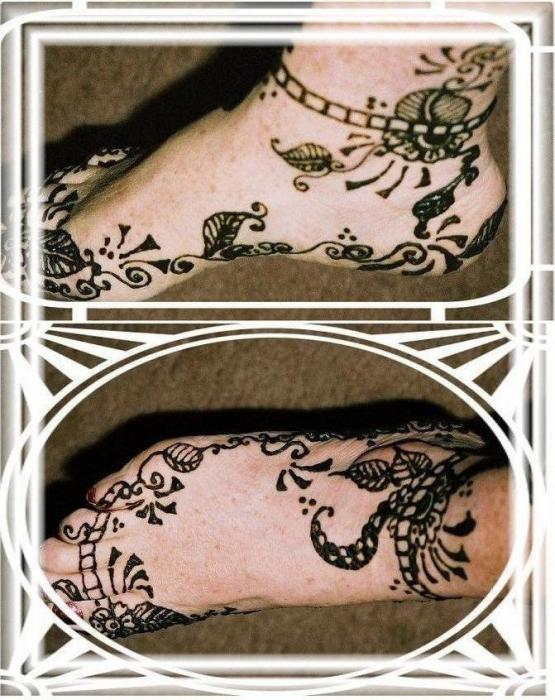Henna Paste (1)Biogarphy Photos Pictures Pics Images
Source(Google.com.pk)
Henna, scientifically named Lawsonia Inermis, is a shrub that grows up to 12 feethigh. It can be found in the hot climates like Egypt, Pakistan, India, Africa, Morocco, and Australia. The plant grows best in heat up to 120F degrees and contains more dye at these temperatures. It wilts in temperatures below 50F degrees. It also grows better in dry soil than damp soil. The leaves are in opposite decussate pairs and vary in sizes from approximately 2-4 cm. long. The flowers are fragrant, produced in conical panicles 1040 cm long, each flower 5 mm diameter, with four white petals. The fruit is a dry capsule 68 mm diameter, containing numerous 12.5 mm seeds.
The henna plant contains lawsone which is a reddish-orange dye that binds to the keratin (a protein) in our skin and safely stains the skin. The stain can be from pale orange to nearly black depending on the quality of the henna and how well ones skin takes it. A good henna, fresh from hot & dry climates, will stain the darkest.
For body decorations, the leaves of the henna plant are dried, crushed into a fine powder, and made into a creamy paste using a variety of techniques. This paste is then applied to the skin, staining the top layer of skin only. In its natural state it will dye the skin an orange or brown color. Although it looks dark green (or dark brown depending on the henna) when applied, this green paste will flake off revealing an orange stain. The stain becomes a reddish-brown color after 1-3 days of application. The palms and the soles of the feet stain the darkest because the skin is the thickest in these areas & contain the most keratin. The farther away from hands and feet the henna is applied, the lesser the color. The face area usually stains the lightest. The designs generally last from 1-4 weeks on the skin surface depending on the henna, care and skin type.
Henna works on all skin types and colors. It looks just as beautiful on dark skin as light skin but because some peoples skin may take the dye better than others, it can look more prominent on one and not as much on another (even lighter skin). But nevertheless, henna is a symbol of beauty, art, and happiness and is meant for EVERYONE!
Because henna acts as a sunblock, there is an added benefit to having henna designs in the summer. For those who love to get a tan It leaves tan lines! In order to benefit from this, it is best to get a henna design, let its natural color stay on for 3-5 days and then go and get a tan. This way you can enjoy the natural henna color on your body, the henna color with the tan, and then tan lines in the shapes of the design (once the henna fades away)! The tan lines last as long as the actual tan!
Henna Paste (1)Photos Pictures Pics Images
Henna Paste (1)Photos Pictures Pics Images
Henna Paste (1)Photos Pictures Pics Images
Henna Paste (1)Photos Pictures Pics Images
Henna Paste (1)Photos Pictures Pics Images
Henna Paste (1)Photos Pictures Pics Images
Henna Paste (1)Photos Pictures Pics Images







No comments:
Post a Comment